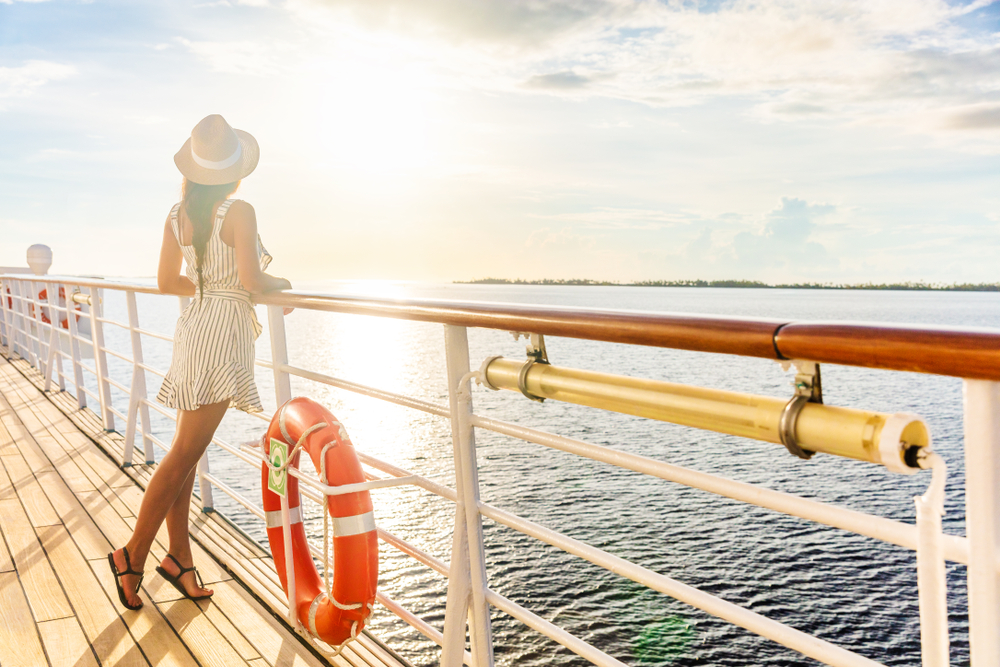Imagine boarding a luxury cruise, gliding across turquoise waters, sipping your drink under the sun, knowing your trip is not just carbon neutral, but actually reversing climate damage. It may sound like science fiction, but carbon-negative cruises powered by captured CO₂ fuel are already making waves in the travel world.
This isn’t some tiny sailboat with solar panels strapped to the deck. We’re talking about full-sized cruise liners with restaurants, spas, and entertainment, all running on fuel made from the very pollution that’s heating our planet. These ships represent a complete paradigm shift in how we think about travel and environmental responsibility.
The technology behind these vessels is so revolutionary that it transforms vacation guilt into environmental virtue. Instead of feeling bad about your carbon footprint, you can actually feel good about helping clean the atmosphere while you relax in a deck chair watching dolphins.
Carbon capture technology turns pollution into cruise fuel
At the heart of these cruises is remarkable technology called carbon capture and utilization. Instead of pulling more fossil fuels from the earth, this process traps carbon dioxide directly from the air, the same CO₂ that’s heating our planet, and converts it into usable fuel through advanced chemical processes.
Think of it as the ultimate recycling program for pollution. Specialized facilities use powerful machines to suck CO₂ out of the atmosphere, then transform those carbon molecules into synthetic fuels that can power massive cruise ships. It’s like turning trash into treasure, except the trash is invisible greenhouse gases and the treasure is clean energy.
When the ship runs on this captured-carbon fuel, it emits less CO₂ than was originally removed from the atmosphere during the fuel production process. This creates a net negative carbon footprint, meaning every mile the ship travels actually helps clean the air rather than polluting it.
The process is so efficient that some ships remove up to 30% more carbon from the atmosphere than they emit during operation. Your vacation literally helps the planet breathe a little easier with every nautical mile you travel.
Advanced onboard systems maximize environmental benefits
These aren’t just regular cruise ships running on different fuel. The entire vessel is designed with sustainability in mind, featuring advanced filtration systems, AI-powered energy management, and solar-assisted systems that further reduce emissions and maximize fuel efficiency.
The AI energy management systems monitor every aspect of the ship’s power consumption, automatically adjusting lighting, climate control, and entertainment systems to minimize energy waste. These smart systems can reduce overall energy consumption by up to 40% compared to traditional cruise ships.
Onboard water treatment systems are so advanced that the ship often returns cleaner water to the ocean than what it takes in. Advanced filtration and purification systems ensure that all wastewater is treated to higher standards than many municipal systems achieve on land.
Solar panels integrated into the ship’s design provide supplementary power for lighting and smaller systems, while wind-capture technology harnesses ocean breezes to assist with ventilation and cooling systems, further reducing the need for fuel-powered generators.
Multiple clean fuel sources create redundant sustainability
Many carbon-negative cruises don’t rely solely on captured CO₂ fuel. They combine this technology with biofuels made from algae or agricultural waste, and green hydrogen produced using renewable energy sources. This multi-fuel approach ensures consistent clean operation regardless of fuel availability.
The biofuel component often comes from algae farms that themselves absorb CO₂ from the atmosphere as they grow. This creates a double environmental benefit where the fuel source actively removes carbon while growing, then provides clean energy when burned.
Green hydrogen, produced by splitting water using renewable electricity, provides another zero-emission fuel option that can power fuel cells for auxiliary systems. When hydrogen burns, it produces only water vapor, making it one of the cleanest possible fuel options.
These ships often source their captured-carbon fuel from specialized plants located near industrial facilities, where they can capture CO₂ from factories and power plants before it enters the atmosphere. Some also use direct air capture technology that pulls CO₂ straight from ambient air using giant mechanical trees.
Luxury amenities meet environmental responsibility
The remarkable thing about these carbon-negative cruises is that passengers don’t sacrifice any comfort or amenities for environmental benefits. These ships feature the same high-end restaurants, spas, entertainment venues, and staterooms that traditional luxury cruises offer.
The dining experiences often emphasize locally-sourced ingredients obtained at ports of call, reducing food transportation emissions while providing fresher, more authentic culinary experiences. Many ships feature hydroponic gardens that grow fresh herbs and vegetables onboard using LED lighting powered by the ship’s clean energy systems.
Spa services incorporate natural and organic products, while entertainment systems use energy-efficient LED displays and sound systems. The pools and water features are heated using waste heat recovery systems that capture and reuse thermal energy from the ship’s engines.
Shore excursions are carefully selected to support local communities and conservation efforts, ensuring that the positive environmental impact extends beyond the ship itself to the destinations visited.
The cruise industry transforms from polluter to planet healer
Traditional cruise ships have long faced criticism for their heavy environmental impact. Conventional cruise vessels burn marine diesel, a fuel that contributes significantly to air pollution, ocean acidification, and climate change. A single large cruise ship can emit as much pollution as thousands of cars.
But carbon-negative cruises completely flip this narrative. Instead of being environmental villains, these ships become active participants in climate solution. Every passenger who chooses a carbon-negative cruise over a traditional vacation is directly contributing to atmospheric cleanup.
The transformation is so dramatic that some environmental groups that previously campaigned against cruise tourism are now endorsing these carbon-negative vessels as examples of what sustainable travel can achieve when industry embraces innovative technology.
For travelers who care about sustainability but still crave adventure and luxury, this represents a genuine game-changer. You can visit exotic ports, enjoy world-class amenities, and know that your vacation footprint is actually helping heal the planet rather than harming it.
Clean cruise technology becomes mainstream and affordable
While carbon-negative cruise technology is still in its early stages, it’s gaining traction rapidly as more cruise lines recognize both the environmental imperative and the market demand for sustainable travel options. Major cruise companies are investing billions in retrofitting existing ships and building new vessels with carbon-capture fuel capabilities.
As the technology scales up and manufacturing costs decrease, these eco-friendly cruise options are becoming more accessible to everyday travelers rather than just luxury passengers. Industry projections suggest that carbon-negative cruises could reach price parity with traditional cruises within the next decade.
The success of these pioneering vessels is inspiring innovation throughout the maritime industry. Cargo ships, ferries, and even private yachts are beginning to adopt similar carbon-capture fuel technologies, potentially transforming the entire shipping sector from a major pollution source into a climate solution.
Government incentives and carbon pricing policies are accelerating adoption by making traditional fossil fuels more expensive while subsidizing clean alternatives. Some countries now offer tax breaks and port fee reductions for ships running on captured-carbon fuels.
The age of guilt-free travel is on the horizon, and carbon-negative cruises are leading the way. These vessels prove that with the right technology and commitment, even leisure activities can help heal the planet rather than harm it.
















